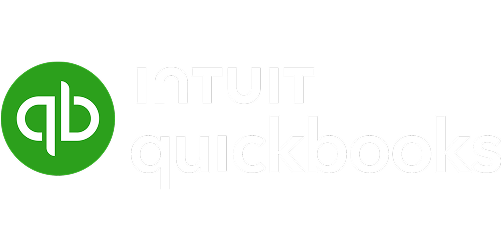The current financial and income tax year ends on Monday 30 June 2025.
This general newsletter might highlight some items that require your attention by 30 June 2025 if you are an individual taxpayer, have a private company or trust, own a business or hold investments.
Topics covered in this newsletter include:
- Superannuation Issues
- Individual Tax Planning Outside Superannuation
- Business Issues
- Private Company Loan Issues
- Discretionary Trust Distribution Issues
As always, we are here to help. If you have any questions, or require any assistance with your year-end tax planning or business matters generally, please do not hesitate to contact us.
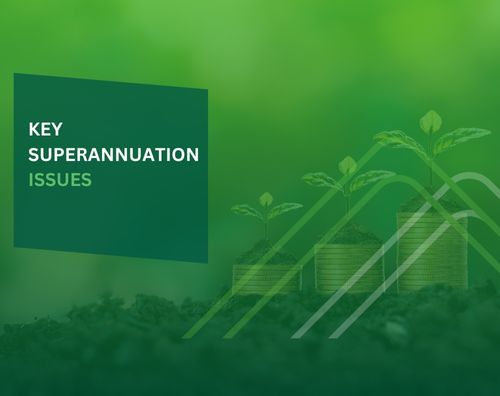
Australia’s superannuation rules have become increasingly complicated following significant changes in recent years. This section focuses on the current limits applying to contributions received by your superannuation fund on or before 30 June 2025 and changes applying from 1 July 2025.
Annual Concessional (ie Tax Deductible) Contribution Limits
The contribution caps for tax-deductible superannuation contributions for all eligible individuals are as follows:

Notes
- Personal superannuation contributions on your own behalf are only tax deductible in the year in which they are received by the Super Fund and where a notice of the claim is given to your superannuation fund.
- Excess concessional contributions above these caps are included in your assessable income – you may, if you wish to, withdraw the tax thereon from your Super fund.
- The work test (ages 67 to 74) requires minimum gainful employment of at least 40 hours within 30 consecutive days.
- Mandated employer contributions for those aged 75 and over comprise only Superannuation Guarantee Charge (“SGC”) and Industrial Award contributions.
- Concessional contributions can only be made in relation to a person under 18 if they are an employee or carry on a business.
Five Years Catch-Up Concessional Contributions
If you make or receive employer concessional contributions of less than the annual concessional contributions cap you may be able to accrue these unused amounts for use in subsequent financial years.
The 2019 tax year was the first financial year you could accrue unused cap amounts and these amounts can be used from 1 July 2019. Unused cap amounts can be carried forward for up to five years before they expire. To be eligible to make catch-up concessional contributions your total superannuation balance must be below $500,000 as at 30 June of the prior financial year.
Personal Concessional Superannuation Contributions By Employees
Employees are able to top up their employer contributions by making tax deductible personal concessional contributions directly to their superannuation account – before doing so they should confirm the “space” available below the concessional contributions cap for the year and understand the consequences should they exceed that cap.
Individuals claiming a tax deduction for personal superannuation contributions must complete the Notice of intent to claim a deduction form and give it to their superannuation fund before the earlier of the date of lodging their 2025 income tax return or 30 June 2026. You must also receive an acknowledgement back from the fund before lodging your 2025 income tax return.
Division 293 Tax
Division 293 imposes an extra 15% on concessional superannuation contributions within the individual’s contribution cap (see above) to the extent that the individual’s concessional contributions and adjusted income for surcharge purposes exceeds $250,000. Adjusted income comprises the sum of:
- taxable income;
- distributions to the individual subject to Family Trust Distribution Tax;
- reportable fringe benefits; and
- net investment losses.
Division 293 increases the tax rate on concessional contributions above the $250,000 threshold and within the concessional contributions cap from 15% to 30%. This higher rate is still 17% below the current maximum marginal personal tax rate including the Medicare Levy.
Proposed Division 296 Tax
The proposed Division 296 tax remains under legislative consideration. While the bill has passed the House of Representatives, it has yet to be enacted into law. The proposed Division 296 tax aims to impose an additional 15% tax on “earnings” from superannuation balances exceeding $3 million, including unrealised capital gains. Earnings corresponding to members balances below $3 million will continue to be taxed at 15% or less. The $3 million cap takes into account both pension and accumulation accounts. The government is not proposing to index the $3 million cap.
If the Bill is passed into Law, it will apply from the 2025-26 financial year onwards.
Non-Concessional Contributions Caps / Limits
In general terms the non-concessional (i.e. after tax) contribution caps to 30 June 2025 for an individual with accrued superannuation entitlements of less than $1.9 million at 30 June 2024 are:
Under Age 75
- General limit (maximum – see below) - $120,000
- With three year bring forward rule (maximum) $360,000
If you are 75 years or older, you are not eligible to use the bring-forward arrangement.
The amount you can contribute under the bring-forward rule depends on your total superannuation balance (TSB) as at end of previous income year:

Superannuation Co-Contribution
Where your total income for the 2025 year is less than $60,400, you are under age 71 and at least 10% of your total income comes from either employment related activities or carrying on a business, you may be entitled to a Government co-contribution if you make personal superannuation contributions. If your total income is less than $45,400 and you make personal Contributions of $1,000 you will receive the maximum co-contribution of $500 which phases out on a progressive basis.
General Reminder on Timing of Superannuation Contributions
In order for superannuation contributions to count against this current year’s contribution caps they must normally be received by the relevant superannuation fund before the end of 30 June. You should be cautious of possible delays through clearing houses and other electronic payment processing systems.
Contributions to your self-managed superannuation fund should be received and credited into the fund’s bank account before the end of 30 June.
Compulsory Superannuation Guarantee Charge (SGC) contributions for the June 2025 quarter must be received by the relevant fund by 28 July 2025 to avoid penalties. SGC Contributions will not be tax deductible until next year if paid in July.
Access to Superannuation Benefits - Preservation Ages
You cannot normally access your superannuation benefits until you reach your preservation age and satisfy a condition of release. Preservation ages are currently as follows:

Superannuation Pension Drawdown Rates
Where you are receiving an account based superannuation pension you should ensure that you draw down the minimum annual pension by 30 June each year. These amounts for this financial year are calculated by applying the following percentages to your pension account opening balance at 1 July 2024.
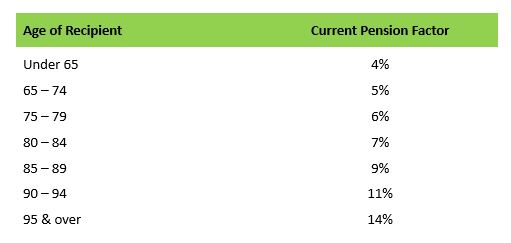
Superannuation General Transfer Balance Caps for Pensions
The superannuation general transfer balance cap was indexed to $1.9m on 1 July 2024 for individuals who start their first retirement phase income stream from that date onwards. The cap increases to $2m on 1 July 2025.
Superannuation Guarantee Charge Opt Out for High Income
Employees
Individuals with more than one employer can opt out of receiving some SGC if they expect to exceed the $30,000 concessional contribution cap merely as a result of combined SGC contributions. Such individuals can apply for a partial SGC exemption certificate. Please contact us if you require further information.
Splitting Concessional (ie Tax Deductible) Superannuation Contributions
A member of a superannuation fund in accumulation phase can elect to “split” part or all of their concessional (ie tax deductible employer and/or personal) superannuation contributions with their spouse where permitted by their superannuation fund. Up to the lesser of 85% of your concessional contributions and the concessional contributions cap, can be split with a spouse under age 55 or who is under age 65 and not retired.
The concessional contributions cap may be increased if you are eligible for “Concessional Catch-up Contributions” (see separate heading above).
This strategy is useful to help equalise superannuation entitlements where only one member has accumulated entitlements above the current $1.9 million transfer balance cap. It can also increase the account balance for the older spouse who will reach the age 60 tax exempt status for benefits first.
First Home Super Saver (“FHSS”) Scheme
The FHSS allows voluntary superannuation contributions made from 1 July 2017 to be withdrawn for a first home deposit. The FHSS provides for contributions up to $15,000 per annum to be contributed to superannuation. From 1 July 2022, the maximum releasable amount is $50,000 (the annual cap will remain at $15,000). It normally provides a 15% tax saving on money channelled through superannuation for those 18 or over who have never owned real property in Australia and are buying their first home.
Eligible participants must buy or build their first home within 12 months after applying to the ATO for a release authority. Released amounts are taxed at the member’s marginal tax rate less a 30% non-refundable offset.
$300,000 Additional Superannuation Contributions on Downsizing Home Sales
Individuals aged 55 and over are able to make an additional non-concessional contribution of up to $300,000 from the proceeds of selling their home that they have owned for more than 10 years. This current downsizer contributions cap of $300,000 for each spouse in a couple (i.e. up to $600,000 in total) will not count toward the non-concessional contributions cap. It will also be exempt from the contribution rules for people aged 75 or older and also from accepting contributions from people with superannuation balances currently over the total super balance cap. Qualifying individuals should consider making any other non-concessional contributions before making a downsizer contribution

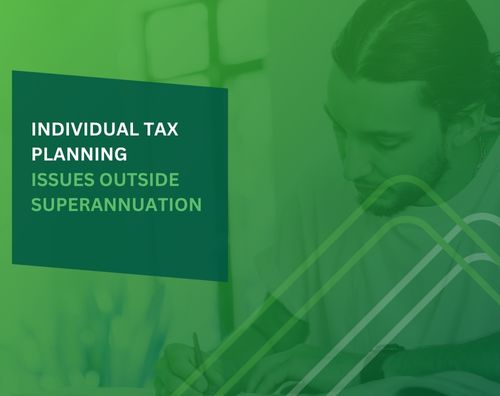
INDIVIDUALS
Personal Income Tax Rates
The Government will introduce a new round of tax cuts for all Australian taxpayers, commencing 1 July 2026. These measures are aimed at providing continued cost-of-living relief. The changes include:
- From 1 July 2026, the 16% tax rate will be reduced to 15%.
- From 1 July 2027, the 15% tax rate will be further reduced to 14%.
This new round of tax cuts is in addition to the initial stage of tax cuts legislated by the Government last year, which have been in effect since 1 July 2024. The current and new tax rates are as follows:

The above rates do not include the Medicare levy of 2%.
Gifts and Deductions
Gifts or donations of at least $2 to eligible charities made by 30 June 2025 are tax deductible this year. Deductions for larger donations can be spread over up to 5 income years. In all cases you should ensure the charity is endorsed as a tax deductible gift recipient and keep your receipt.
Work Related Car Expenses – Limited Deduction Choices
Individual taxpayers can only claim a deduction for car expenses using one of the following two methods:
Where an employee’s car has comparatively limited business use it may be tax effective for the employee to “salary package” the car if permitted by their employer. There is a range of service providers in this area offering novated lease salary packaging opportunities which reduce the employer’s administrative burden of providing fringe benefits.
Medicare Levy Surcharge – Inadequate Private Health Insurance
A Medicare levy surcharge applies where your income for surcharge purposes exceeds prescribed thresholds and you do not have adequate private health insurance. The MLS income thresholds for 2024-25 are as follows:
- The 1% surcharge commences to apply for individuals with income for surcharge purposes exceeding $97,000 (singles) and $194,000 (couples) plus $1,500 for the second and subsequent dependent children. The maximum surcharge of 1.5% applies for incomes above $151,000 and $302,000 respectively.
- Income for surcharge purposes comprises:
- taxable income of the taxpayer and their spouse;
- distributions to the above subject to the Family Trust Distribution Tax;
- reportable fringe benefits;
- reportable (eg salary sacrifice) superannuation contributions; and
- total net investment losses.
If you expect your income to rise above the relevant threshold next financial year and you do not currently have qualifying private health insurance, you may need to consider taking it out. The cost of the premiums may be less than the surcharge involved.
Private Health Insurance Tax Offset
There individuals are covered by qualifying private health insurance they may qualify for the private health insurance offset on the associated premiums. This can be accessed as a reduction in the premium or a tax refund. Singles qualify for a full or partial offset where their income for surcharge purposes (see definition above) is less than $151,000 plus $1,500 for each dependent child after the first.
Couples qualify for a full or partial offset where their income for surcharge purposes is less than $302,000 plus $1,500 for each dependent child after the second. In both cases the offset varies between 8.095% and 32.385% of the premiums depending on the contributor’s age and family income.
Lifetime Health Insurance Cover Loading-No Private Health Insurance After Age 30
If you do not have private hospital cover with an Australian registered health fund on your Lifetime Health Cover base day and then decide to take out hospital cover later in life, you will pay a 2% loading on top of your premium for every year you are aged over 30 and do not have cover.
Your Lifetime Health Cover base day is normally the later of 1 July 2000 or the 1st of July following your 31st birthday.
Exotic “Tax Driven” Investments
We discourage investments in “tax driven” investments unless they can be expected to deliver sound commercial returns (assistance may be required from an Australian Financial Services License Holder to assess the viability of the project). We are not licensed to comment on the commercial merits of such investments.
Removal of Capital Gains Tax Main Residence Exemption for Certain Overseas Home Owners
From 1 July 2020 foreign tax residents at the time they dispose of their previous residential home in Australia will generally not qualify for an exemption from capital gains tax on any gain.
Deducting Prepaid Expenses
Individual non-business investors and small business taxpayers (currently aggregated turnover under $10 million) are able to claim tax deductions for prepayments of tax deductible expenses this financial year where the period covered by the prepayment does not exceed 12 months and ends by 30 June 2026.
These taxpayers may be able to reduce this year’s taxable income by pre-paying up to 12 months of tax deductible interest expense by the end of June 2025 – banks have special loan products in order to facilitate interest in advance payments. Please check with your bank if you wish to prepay interest as not all loan products qualify.
Note that different rules apply to non-small business taxpayers and to “tax shelter” investments.
Capital Gains Tax (“CGT”) – Timing of Asset Sales
For CGT purposes, the date of acquisition or disposal of an asset is normally the date of exchange of the relevant contract (and not settlement). The difference between a 30 June and a 1 July sale contract date can be effectively a full year difference in the payment due date for any resulting CGT liability.
The long term CGT discount (50% for resident individuals; 0% for non-residents and 33.33% for superannuation funds in accumulation phase) is generally available where assets have been owned for more than 12 months between the dates of the purchase and sales contracts. If you are close to the 12 month ownership period, you should weigh up the ability to access this discount when considering the timing of a sale, along with other commercial considerations such as the asset’s current price and its potential price volatility.
If you have realised taxable capital gains from selling profitable investments during the year you may be able to reduce your CGT liability by selling other assets with unrealised capital losses by 30 June this year. For example, if you have unrealised losses on listed shares you could sell them to unrelated third parties in order to crystallise the loss. “Wash” sales to related parties, such as a family trust, can raise tax avoidance issues as can “parallel” trades in the same asset (eg one taxpayer sells listed shares and a related taxpayer buys shares in the same company).
Capital Loss Record Keeping
Where you have made a capital loss you should keep records of the transactions giving rise to the loss for a further four years after you receive your income tax assessment for the year in which the loss is applied against taxable capital gains. You can choose the order in which capital losses are applied. In general they should normally be applied first against “short term” capital gains realised on assets held for less than 12 months which do not qualify for the 50% discount.
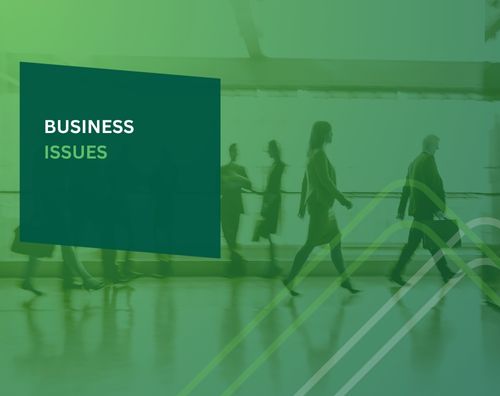
Superannuation Guarantee increases to 12%
The Superannuation Guarantee (SGC) rate increases from 11.50% to 12% on 1 July 2025. This increase is part of a phased plan to enhance retirement savings for Australian workers. The SGC rate will remain at 12% beyond 1 July 2025, with no further increases scheduled.
For your employees you will need to review their employment agreements to determine if the increase of 0.5% is in addition to their salary package or reduces the cash component of their salary package.
Employers are required to make superannuation guarantee contributions to their eligible employee's superannuation fund regardless of how much the employee is paid. The $450 per month threshold was removed on 1 July 2022.
Payday Superannuation
The Payday Super reform was announced in the 2023–24 Federal Budget. As of now, the reform is not yet law, the government has released draft legislation. If the law is passed, employers will be required to pay their employees' super at the same time as their salary and wages. The new requirements are scheduled to take effect from 1 July 2026.
ATO Interest Charge No Longer Be Deductible
Starting from 1 July 2025, General Interest Charges (GIC) and Shortfall Interest Charges (SIC) will no longer be tax-deductible for income tax purposes, regardless of when the underlying tax liability arose. Similarly, if the ATO later remits GIC or SIC amounts incurred on or after 1 July 2025, these remitted amounts will not need to be included as assessable income, since no deduction was claimed initially. GIC and SIC incurred before 1 July 2025 will remain deductible under the previous rules.
Although GIC or SIC can be calculated to accrue over a period of time, in many instances, it is considered to be incurred on a single day. Therefore, whether GIC or SIC is deductible at all may depend upon whether a notice of assessment is issued before or after 1 July 2025, regardless of whether any of the interest relates to a period before 1 July 2025.
Businesses currently on ATO payment plans that extend beyond 1 July 2025 should be aware that any GIC or SIC accrued after this date will not be deductible, even if it relates to an earlier debt. If possible, businesses may consider refinancing and paying off existing tax debts before the new rules take effect.
What is Your Company’s Tax Rate?
The company tax rate for Base Rate companies is 25%, for all other companies the rate is 30%. Broadly, a Base Rate entity is an entity which has an “aggregated” turnover of less than $50m for the 2025 year and has less than 80% “passive income” in its own turnover.
Aggregated turnover includes the turnover of the company and both its:
- affiliated entities – these are entities that act or could reasonably be expected to act in accordance with the entity’s directions or wishes or in concert with the entity.
- connected entities – these are entities either controlled by, or which control the entity; and
Passive income includes:
- Dividends other than non-portfolio dividends;
- Franking credits on such dividends;
- Non-share dividends;
- Interest income;
- Royalties and rent;
- Gains on qualifying securities;
- Net capital gains; and
- Income from trusts and partnerships to the extent that it is referable directly or indirectly to passive income.
Dividend Franking Credit Issues for “Base Rate” Companies
For dividends paid or credited by 30 June 2025 for Base Rate Companies, they can only be franked at the 25% tax rate and not the higher 30% tax rate. This results in higher “top up” tax where fully franked dividends are paid to individuals on higher marginal tax rates. For individual shareholders with ongoing taxable incomes above $190,000, the top up tax rate on dividends franked at 30% will be 24.29% of the cash component of the dividends. For individual shareholders with ongoing taxable incomes above $190,000, the top up tax rate on dividends franked at 25% will be 29.33% of the cash component of the dividends.
Small Business Entity (SBE) Tax Concessions - $10 Million Turnover Test
The SBE rules apply to a sole trader, partnership, company or trust which carries on a business for all or part of the year and has an “aggregated” (group) turnover of less than $10m per annum.
- Simplified capital allowance (depreciation) concessions;
- Simplified trading stock concessions;
- Potential access to CGT small business concessions (see below);
- Immediate tax deduction for business start-up costs;
- Immediate tax deduction for prepaid expenses where the goods or services will be provided within 12 months of the prepayment;
- Option to use GST adjusted notional tax method to work out PAYG instalments;
- Fringe Benefits Tax exemption for certain on site car parking; and
- Ability to account for GST on a cash basis.
The turnover threshold for the small business CGT concessions remains at $2 million where the alternative $6 million net asset value test is failed.
The aggregated turnover for the CGT small business restructure rollover is also $10 million.
Tax Depreciation and Instant Write-Off Incentives for Small Businesses
The Government has extended the $20,000 instant asset write off by 12 months until 30 June 2025.
This measure applies to eligible assets valued at $20,000 or less, that are first used or installed ready for use by 30 June 2025. Small businesses with aggregated turnover of less than $10 million will be eligible for this instant asset write-off.
Assets valued at $20,000 or more (which cannot be immediately deducted) can continue to be placed into the small business simplified depreciation pool and depreciated at 15% in the first income year and 30% each income year thereafter. Alternatively, they can also be depreciated under the general depreciation rules in accordance with the ATO effective life table.
The provisions that prevent small businesses from re-entering the simplified depreciation regime for five years if they opt-out will continue to be suspended until 30 June 2025.
Medium businesses (Annual Turnover between $10m to $50m)
Businesses that are not SBE because their turnover is $10m or more but less than $50m can also access the following small business concessions:
- Simplified trading stock concessions – i.e. if the estimated value of your trading stock changed by less than $5,000 in the year, then you are not required to conduct a formal stocktake and you are not required to account for changes in your trading stock’s value;
- PAYG instalments concession – i.e. using the instalment amount calculated by the ATO;
- A two-year amendment period – i.e. you have two years from the date of notice of assessment to submit an amendment tax return;
- Car parking fringe benefit exemption – i.e. car parking fringe benefits that are not provided in a commercial car park will be exempted from FBT provided that all other eligibility criteria are satisfied.
Note: while the above concessions were previously limited to small businesses with aggregated turnover under $10 million, they are now also available to medium-sized businesses.
Deferring Business Income Generally
Income received in advance of the provision of the relevant goods or services may be able to defer until the next tax year. The Tax Office has ruled that income which is subject to a “contingency of repayment” can also be deferred.
Deductions for Employee Bonuses
Deductions can be claimed this year by business taxpayers for bonuses to be paid after year end to unrelated employees where the business has definitely committed to pay the bonus by 30 June 2025. This requires that the amount of the bonus (or its method of calculation) has been finally determined and, preferably, notified to the relevant employees by this date.
Bad Debt Deductions
In order to claim a bad debt tax deduction this financial year the debt must have been included in the taxpayer’s assessable income and be physically written off in the business’ accounting records on or before 30 June. Businesses may then also be able to recover any GST remitted on these debts.
Moneylenders can also claim bad debt deductions for normal business loans.
Trading Stock Valuation Rules
Trading stock on hand at year end can be valued at (full absorption) cost, market selling value or replacement cost. Normally the lowest value is chosen to minimise taxable income. However, if your business has incurred losses or you expect your marginal tax rate to rise in future (sole trader only), a higher year end value may be preferred.
Obsolete Stock or Plant and Equipment
Obsolete stock and obsolete plant and equipment should be physically scrapped by 30 June 2025 in order to claim a full tax deduction this year. However, where obsolete stock is not scrapped it may still be possible to justify a lower value for tax purposes.
Reportable Fringe Benefits and Employee Share Scheme Income on PAYG Payment Summaries
Where the grossed up value of fringe benefits provided to an employee during an FBT year exceeds $2,000 this total must be reported on the employee’s annual payment summary. Certain benefits are excluded principally:
- Meal entertainment unless salary packaged;
- Car parking; and
- Certain “pooled” cars.
Employees of Not-for-Profit Organisations are subject to a $5,000 annual cap on salary sacrifice meal entertainment.
Where corporate employers provide company shares or share options to employees or their associates the relevant taxable income, if any, must also be reported to the Tax Office.
Research & Development (R&D) Tax Incentive
The R&D Tax Incentive was introduced to encourage companies to engage in research and development by providing a tax offset for eligible R&D activities.
Companies with aggregated annual turnover greater than $20m
From 1 July 2021, the rates of the non-refundable R&D tax offset are the incremental intensity of R&D expenditure as a proportion of an entity's total expenditure for the year. The marginal R&D premium is the company tax rate plus a premium based on the level of incremental R&D intensity for their expenditure:

Companies with aggregated annual turnover less than $20m
From 1 July 2021, the refundable R&D offset is set at a premium of 18.5 percentage points above an entity’s company tax rate.
From 1 July 2021, the cap on expenditure for which R&D incentive rates can be claimed is set at $150m per annum.
Companies with aggregated annual turnover less than $20m (Continued)
For eligible R&D entities entitled to the refundable R&D Tax Offset, a cash refund for the entire eligible R&D expenditure is possible, depending on the tax losses available.
For eligible R&D entities entitled to the non-refundable R&D Tax Offset, to the extent that tax payable is reduced to $nil, the remaining portion can be carried forward for use in future income years to offset future tax payable. To claim these offsets in future years, the usual loss recoupment rules must be satisfied.
For eligible R&D expenditure exceeding $150 million, a Tax Offset is only available at the applicable corporate tax rate, resulting in a $nil R&D benefit.
R&D related expenses incurred to an associate should be physically paid before 1 July 2025 to qualify for the current year’s offset.
Lastly, qualifying companies should be registered with AusIndustry on behalf of Innovation Australia within 10 months after year end (i.e. by 30 April 2026 for a 2025 claim by a company with a 30 June year-end).
Individuals with “Non-Commercial” Business Losses
Individuals with annual adjusted taxable incomes (the sum of taxable income, reportable fringe benefits, reportable (i.e. salary sacrifice) superannuation contributions and net investment losses) exceeding $250,000 are not able to deduct any business losses against their other taxable income.
Other individuals incurring business losses cannot deduct those losses against their other taxable income unless that business satisfies one or more of the following tests:
- a farmer whose non-primary production income is less than $40,000;
- the assessable income from the activity is at least $20,000 (full year equivalent);
- the activity has been profitable in at least three of the last five income years;
- the value of real estate used in the business is at least $500,000; or
- the value of other business assets is at least $100,000.
Amending Thin Capitalisation
New thin capitalisation rules came into effect for income years starting on or after 1 July 2023. The existing $2m de minimis threshold remains unchanged, entities with total debt deductions (including those of associated entities) below this threshold are exempt from the thin capitalisation rules. The previous asset-based tests have been replaced with earnings-based tests. The new measures include the following changes:
1. Replace safe harbour test with a fixed ratio test by limiting an entity’s debt:
related deductions up to 30% of earnings before interest, taxes, depreciation and amortisation (tax EBITDA). Any debt deductions in excess of the 30% EBITDA ratio would be denied. However, the amount denied can be carried forward and claimed in a subsequent income year (up to 15 years). This method is the default method unless a taxpayer makes a choice to use the other 2 methods.
2. Replace the worldwide gearing ratio by the new earnings-based group ratio test.2. Replace the worldwide gearing ratio by the new earnings-based group ratio test.
An entity in a group can claim debt-related deductions up to the level of the worldwide group’s net interest expense as a share of earnings (which may exceed the 30% EBITDA ratio). There is no carry forward of denied deductions under this method.
3. Retain an arm’s length debt test as a substitute test. However, this test will only be available for external (third party) debt.
From 1 July 2024, the Debt Deduction Creation Rules (“DDCR”) will apply to prevent multinational from generating artificial or excessive interest deductions in Australia through related-party transactions that are lacking commercial substance. The rules will disallow deductions for interest expenses arising from certain related-party transactions, such as acquiring assets from associates or funding payments to associates.
The DDCR applies regardless of whether the entity satisfies any of the three thin capitalisation methods mentioned above. It is important to note that the DDCR also has application to arrangements that were entered into before 1 July 2024 if debt deductions continue to arise from the historical arrangements in income years commencing on or after 1 July 2024.
Taxable Payments Annual Report (TPAR)
If you operate in particular industries, or are a government entity and make payments to contractors principally for labour, you must prepare and lodge a “Taxable Payments Annual Report" (TPAR) with the ATO showing the payments that you have made to each contractor during the year. Contractors can include subcontractors, consultants and independent contractors, whether operating as sole traders, or through companies, partnerships or trusts.
This report should be submitted by 28 August 2025.
For the year ended 30 June 2025, this covers the following industries:
If you operate in particular industries, or are a government entity and make payments to contractors principally for labour, you must prepare and lodge a “Taxable Payments Annual Report" (TPAR) with the ATO showing the payments that you have made to each contractor during the year. Contractors can include subcontractors, consultants and independent contractors, whether operating as sole traders, or through companies, partnerships or trusts.
This report should be submitted by 28 August 2025.
For the year ended 30 June 2025, this covers the following industries:
- Building & construction services;
- Cleaning services;
- Courier services;
- Security providers and investigation or surveillance services;
- Road freight transport;
- Information technology services; and
- Government entities.
Entities may be eligible to lodge a "Not Required to Lodge" notification for TPAR purposes if they meet certain criteria. Specifically, this exemption may apply where:
- For businesses providing mixed services, if the total payments received for the above relevant services constitute less than 10% of the entity’s current or projected GST turnover, excluding building and construction services (to which this concession does not apply); or
- The entity has not made any payments to contractors during the year for the relevant industry service.
15% Global and Domestic Minimum Tax
Australia's Global and Domestic Minimum Tax (enacted December 2024) ensures large multinational groups with global revenue over €750 million pay at least a 15% effective tax rate. The objective is to discourage profit shifting to low-tax jurisdictions and ensure that companies pay a fair share of taxes wherever they generate profits. The rules will apply to in scope multinational enterprise (“MNE”) with consolidated accounting revenue of greater than €750 million to pay a top-up tax if their effective tax rate in a particular jurisdiction is less than 15%. Broadly:
- The global minimum tax rules would allow Australia to apply a top-up tax on the Australian parent entities of the MNE group where the foreign group entity’s income is taxed below 15% and no domestic minimum tax in that jurisdiction. The objective is that if the multinational company pays taxes below the global minimum tax rate 15% in one country (usually in the tax haven), it would be required to pay the difference in another country where it operates.
- The domestic minimum tax rules would give Australia first claim on top-up tax where Australian subsidiaries of the MNE group have an effective Australian tax rate of less than 15%. This domestic minimum tax allows Australia to collect tax revenue where that would otherwise have been collected by another country’s global minimum tax. The objective is to prevent MNE from reducing their tax burden through various tax avoidance or tax planning strategies.
Effective dates:
The Global Minimum Tax is implemented through a two-tiered framework: the Income Inclusion Rule (IIR) and the Undertaxed Profits Rule (UTPR).
- Income Inclusion Rule (IIR) and Domestic Minimum Tax (DMT) - Apply to fiscal years starting on or after 1 January 2024; and
- Undertaxed Profits Rule (UTPR) - Applies to fiscal years starting on or after 1 January 2025. Broadly, UTPR allows Australia to collect top-up tax if no IIR was collected by the parent country.

Loans to Shareholders and Debt Forgiveness
Loans or payments made by private companies to their shareholders or associates can give rise to “deemed dividends” for income tax purposes under “Division 7A” of the Tax Act 1936. Deemed dividends are taxable to the recipient as an unfranked dividend. No action is required before 30 June 2025 for new loans made since 1 July 2024.
No deemed dividends arise for outstanding loans made in the 2024 and prior years where:
- the loan was repaid in full by the earlier of the due date for lodging the company’s tax return for the year it was made or the actual date the return was lodged (“the lodgement date”); or
- the loan is covered by a written loan agreement for either 7 years (as an unsecured loan) or 25 years (where secured over real estate) made before the lodgement date and the required minimum interest charges and principal repayments are made by 30 June each year commencing with the year after the year in which the loan was made; or
- the company had accumulated accounting losses and did not have a “distributable surplus” as defined in the Tax Act 1936 in the year the loan was made (but note that a deemed dividend can arise when loans are forgiven in a subsequent year if there is a distributable surplus at the end of that year).
Deemed Dividends and Provision of Company Property
The private company loan rules extend to situations where a private company’s property (boats, holiday houses etc) is available for the private use of shareholders or their associates and less than a market rental is charged. Where these rules apply, we recommend that a register is kept of the dates company property was either used for private purposes or was available for private use by the shareholders.

Discretionary Trust Distributions
Trustees of discretionary (i.e. non-fixed) trusts must resolve and document their decision on how to distribute the current year’s trust income including any realised capital gains by 30 June 2025 or such earlier default distribution date as is specified in the trust deed. The tax laws allow trustees to “stream” capital gains and/or franked dividend income to particular beneficiaries where permitted by the terms of the trust deed. Other classes of income such as interest are blended and cannot be streamed.
In order for distribution resolutions to be as tax effective as possible, trustees should have a clear understanding of the trust’s likely accounting and taxable income (including capital gains) and expenses of the trust and of potential beneficiaries for this current financial year.
Where we are aware that you control a discretionary trust we will be contacting you before 30 June about any proposed distributions.
ATO Concerns – Section 100A Reimbursement Agreement
The Tax Ruling TR 2022/4 and the practical compliance guideline PCG 2022/2 set out the Commissioner’s view on the application of section 100A of the Tax Act – “Reimbursement Agreement”. Section 100A is an anti-avoidance provision targeting arrangements where a taxable trust distribution is made to one beneficiary while the economic benefit is enjoyed by someone other than that beneficiary and a tax saving resulted.
The basic conditions for section 100A to apply are:
- There is a reimbursement agreement (this can simply be a payment of money, transfer of property, or provision of services or other benefits); and
- A beneficiary is presently entitled to trust income and taxed thereon while the economic benefits are provided to someone other than the beneficiary; and
- Unless the arrangement is “an ordinary family or commercial dealing”, section 100A would apply and deem the beneficiary not to be taxed to the income distributed, rather the trustee is assessed on that income at the top marginal tax rate. The ATO ruling takes a very limited view of what constitutes an ordinary family or commercial dealing for that exception to apply.
It is important to note that section 100A is an anti-avoidance provision, and the Commissioner is not bound by any amendment time limits when giving effect to section 100A. However, the Commissioner has indicated in the ruling that they will not apply compliance resources for arrangements entered into prior to 1 July 2014.
Section 100A is expected to be a compliance area that the ATO will be focusing on.
Beneficiary Tax File Numbers
Where current year trust distributions are contemplated to adult taxpayers who have not previously provided their Tax File Numbers (“TFNs”) to the trustee, those TFN’s must be provided to the trustees by 30 June 2025 and reported by Trustees to the Australian Taxation Office (“ATO”) by 31 July 2025. Where a trustee does not have the TFN of an adult beneficiary, the trustee must withhold 47% of any trust distribution to that adult for the current year and remit that amount to the ATO by 30 September 2025.
Trust Losses/Family Trust Elections
Where a discretionary trust or other trust that does not qualify as a “fixed” trust incurs an income tax loss or bad debt it may need to make a Family Trust Election or satisfy an alternative test in order to preserve the benefit of those deductions into future years. A Family Trust Election restricts the class of potential beneficiaries that can receive trust distributions without the trust being subject to the 47% Family Trust Distribution Tax.
Family trust elections may also be required where a discretionary trust has substantial franked dividend income or where it has a significant interest in a private company that has tax loss and/or bad debt deductions.
Family trust elections raise a number of complex issues that are best discussed with us.
Unpaid 30 June 2024 Trust Distributions to Private Companies (UPEs)
Any outstanding (i.e. unpaid) trust distributions made to corporate beneficiaries during the 30 June 2024 tax year will need to be addressed at the latest before the due date for lodging the company’s 30 June 2025 income tax return (normally 15 May 2026 or actual lodgement date if earlier).
Making a cash payment to the company is the most straightforward way to clear the unpaid distributions.
Other options are available to manage the unpaid amount over a period of time. The most common involves documenting the transaction by way of a written Division 7A private company loan agreement repaid over 7 years on a principal and interest basis for unsecured loans (or 25 years when secured over real estate) with interest commencing from 1 July 2025. More complex strategies involving sub-trusts are possible.
Commissioner of Taxation vs Bendel [2025]
The recent Bendel case held that unpaid present entitlements (UPEs) to corporate beneficiaries are not loans under Division 7A. However, the ATO has applied to appeal to the High Court, and it has issued an interim decision impact statement in response to the Full Federal Court’s decision. The ATO maintains its existing position which treats certain UPEs as loans for Division 7A purposes. The ATO also indicated that such arrangements could still be scrutinized under Section 100A if they involve reimbursement agreements.
The ATO advised taxpayers to continue applying the current guidance until the legal process concludes. This includes considering the implications of UPEs under Division 7A and ensuring compliance with existing tax obligations.
%20(1).jpg)
%20(3).jpg)

